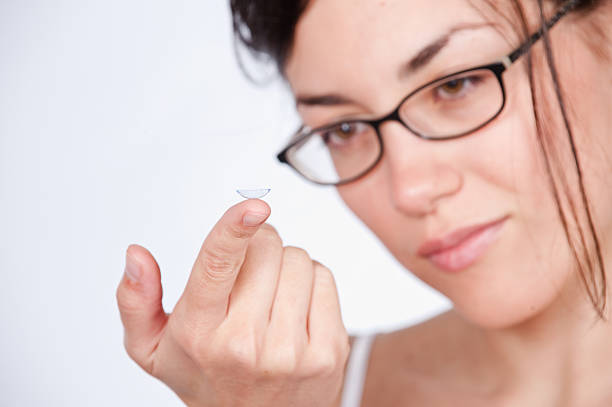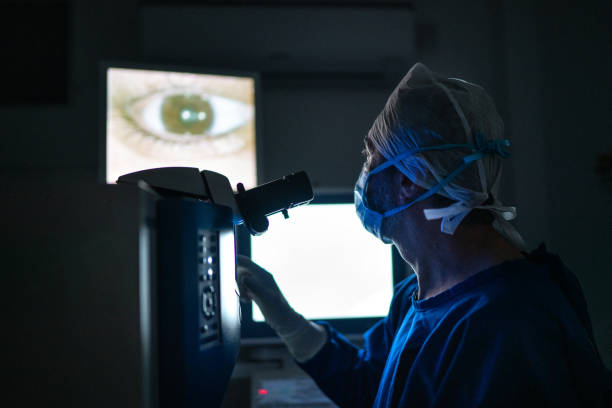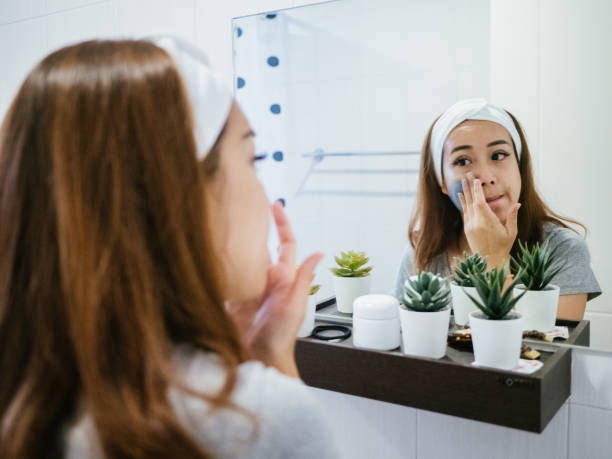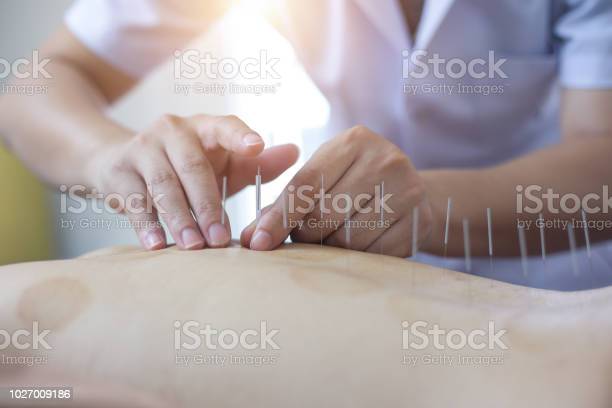|
|
|
|
Descubre tu piel...
...descubre el láser. Keratoconus: Contact Lens Options For Clear Vision
Keratoconus is a relatively common eye condition that is found in about one out of every two thousand people. It is a disease that progresses very slowly and will increasingly cause a distortion in the image processing in the eye. Symptoms of this eye conditionWith keratoconus the cornea over the pupil and iris begins to protrude, often with an irregular shape. Since this covering is what allows the light into the eye when it is not shaped uniformly the image is distorted, which is similar to looking through an irregularly shaped piece of glass as opposed to a curved or smooth glass surface. The first signs of keratoconus typically develop in people in their late teens through their twenties. There may or may not be a family history of the condition and there is no determined genetic factor that causes the disease. It is more common in people with allergies, specific health conditions and much less commonly in those that have had contacts for long periods of time. Generally with the case of contact wear it is because the contacts were worn for long periods of time when they were not extended wear styles or the person failed to clean and correctly use the contacts on a routine basis. The symptoms of keratoconus are slow to develop and typically start with blurred vision in one or both eyes that occurs when looking at objects both near and far. The person may learn to accommodate by squinting to change the light entering into the eye, producing a clearer image. Often there is redness, irritation and commonly rubbing or scratching of the eye is a habit that the person develops, causing further potential damage to the eye's surface. Treatment of this eye conditionThere is no drug therapy treatment for the condition and for most people the vision can be corrected with Keratoconus contact lens prescriptions that are based on the specific prescription for each eye. It is important to note that both eyes may progress with the disease at different rates and times, so frequent checks with your eye doctor may be required to effectively manage the eyesight, our glaucoma specialist can help you with this as they also treat Keratoconus. In less that 10% of all patients corneal transplants may be required to treat the most severe cases of the disease. The new styles of keratoconus contact lens products are designed to be custom fitted to each eye. The lenses will have a variety of different shapes to correctly match the protrusion of the cornea that occurs because of the condition. They can be rigid lenses or soft lenses and both have their merits based on the particular eye shape and vision correction required. However, with both options there is typically several fittings and test lenses that need to be worn and tested to meet the needs of the wearer. Different manufacturers of Keratoconus contact lens products will indicate if the lenses they provide are suitable for mild, moderate or severe cases of the condition. Since patient comfort with any style of lens is essential it is best to work with an eye doctor that has experience in fitting lenses for this unique eye shape and condition. For more tips about vision care, check out Ophthalmic Consultants of the Capital Region now! Dependent Personality Disorder
Dependent Personality Disorder (DPD) refers to a personality disorder that manifests through a powerful psychological dependency of the patient towards others (family, partner, etc). Beitz & Bornstein (2006) define the dependent personality disorder as “a personality disorder wherein the individual exhibits longstanding, inflexible, excessive dependency which leads to do difficulties in social, sexual and occupational functioning.” (p. 230). The way a patient with DPD thinks:Others are more prepared than I am to deal with life’s everyday demands, they are stronger and braver in facing life’s problems. Without them, I would not make it, I would feel just like a child lost from his parents in the madness of the outside world. I am not a strong person, I am good for nothing, my life is not in my own hands and the world is an evil place, a much too competitive place where I can never strive through my own forces alone. However, I am not completely lost because there still is someone to protect me and make the best decision for me (partner, family, relatives, etc). My relationships with those who can protect me are the most important things in the world for me and it’s only thanks to them that I can actually live a normal life. I would do anything for the people who remain in a relationship with me, I would rather accept things that I don’t really like and sacrifice myself in order to be accepted in a relationship (even with the price of being abused). The thought that I could be left alone is the worst thing imaginable. I don’t feel great in large groups of people, especially if I don’t know them well enough and if they criticize me. Being generally less capable than others, I run the risk of getting criticized more often, a fact that makes me be more reserved, less able to perform, more fearful in coming up with the initiative, and in working on my own. Causes and diagnosis:The causes of this disorder are not very clear. Even though it is believed that genetics play an important role in the development of this disorder, the psycho-dynamic orientations in psychology claim that the greater importance is that of the parental treatment that has been applied to the child in the first years of life. A very strict parent, who did not leave much room with the child for decision-making or who offered the child all that he/she wanted without encouraging him/her to put some effort into getting the object of their desire greatly contributes to the development of a dependent personality (Nagata, 2003). The diagnosis is being made according to DSM-IV (2000) if at least 5 of the 8 symptoms are present:
TreatmentBeing a chronic illness, medication is needed for extended periods of time. At the same time, psychotherapy is a good method for minimizing the effects of this disorder. Psycho-dynamic therapies are behaviorist therapies are usually the first recommendations (Nagata, 2003). Also, good family support is needed in order for the person to engage in social activities that will increase their self-esteem, help them to mature emotionally, and consolidate their personality. If you or a loved one would like to learn more about your options for treatment, click here. Group activities and therapies (where no competition or leadership actions are implied, but rather the focus goes on collaboration) are ways of helping a person suffering from DPD to create new relationships, to come to know more people, and thus giving up slowly the need to focus on just one or two significant relationships in their lives. At the same time, encouraging children to be independent and to rely on their own powers, encouraging their freedom as well as their responsibilities according to their age can help them in becoming healthy adults, capable of leading a happy and fulfilling life. Lazer Eye Surgery Care Afterwards A person that is considering a Lazer Eye Surgery procedure to improve their vision has two major responsibilities: selecting the best surgeon possible for their budget, and understanding and keeping up with eye care after the Lazer Eye Surgery operation is done. Most Lazer Eye Surgery procedures go very smoothly, and more than 90% of the patients are happy with their improved vision and have no permanent side effects. Part of this success is due to good care at home once the Lazer Eye Surgery procedure is complete. The first step in having the best care after a Lazer Eye Surgery procedure is to understand exactly what is directed by the Lazer Eye Surgery physician. The prospective Lazer Eye Surgery patient should be given a good understanding of the entire process when they first visit a Lazer Eye Surgery center to interview the physician and the staff. On the day of the procedure, a member of the staff should very carefully go over exactly what steps should be done to encourage optimal eye health and healing after the Lazer Eye Surgery operation. Lazer Eye SurgeryOne thing that the patient should ask is what side effects are to be expected directly after the Lazer Eye Surgery procedure, how long they should last, and which symptoms should be promptly told to the Lazer Eye Surgery physician or member of the staff. A number of Laser eye surgery symptoms, such as fluctuating vision or halos around lights, are to be expected and are not a cause of worry. Ask the staff about any laser eye surgery postoperative symptoms that are unclear, to make sure that they are thoroughly understood. Each Lazer Eye Surgery physician has their own recommended procedures for their patients, but here is a list of typical suggestions that most Lazer Eye Surgery centers recommend. First, get some sleep as soon as possible after the Lazer Eye Surgery procedure is done. This gives a great boost to the natural healing process in the eyes. Second, avoid any contact, bumping, or rubbing of the eyes for at least five days after the Lazer Eye Surgery procedure. Most Lazer Eye Surgery centers have some kind of eye guards to wear at night to prevent patients from rubbing their eyes in their sleep. Third, try to avoid eyestrain for some days after the Lazer Eye Surgery procedure. It is tempting to try to read all of the signs and words that were previously blurry, but avoid this temptation to help your eyes heal quicker. If any light sensitivity or glare is noticed after your laser eye surgery, wear dark sunglasses for several days until this problem resolves itself. Some common Lazer Eye Surgery side effects are temporary halos around lights, especially when viewed at night, but this is not a problem to be concerned with. It is very important to keep the eyes well lubricated in the days following a Lazer Eye Surgery operation. Every Lazer Eye Surgery physician will give eye drops to help this, and patient should be especially aware of this before going to sleep. A Lazer Eye Surgery procedure may increase eye dryness temporarily, and during sleep this may make the eyelid stick slightly to the eye. When the patient wakes up from laser eye surgery, opening the eyelid is equivalent to rubbing the eye. The physician should be notified if this happens because there are other types of eye drops that will help solve this problem. Taking these simple steps will give nearly all Lazer Eye Surgery patients an easy postoperative experience without any problems. If you are looking for more eye care tips, check out Ophthalmic Consultants of the Capital Region now! Best 10 Ways Remove Of Dark Circle Step 1: KNOW YOUR ALLERGIES- It is essential to know what you are allergic to so you can eliminate that problem altogether. Be sure to check everything from a seasonal allergy, food allergy, pet allergy and anything that could possibly trigger an allergic reaction. An allergy that causes dark circles, which is commonly overlooked, is gluten. Be very thorough when checking these over! Step 2: GET PLENTY OF SHUT EYE- It’s common knowledge that not getting enough sleep results in those nasty dark circles under your eyes. You need to determine how much sleep your body needs and then get your body into a routine! The normal body needs between 7-9 hours of sleep per night. Keep in mind that alcohol and drugs negatively affect your sleeping patterns! Step 3: USE FACIAL PRODUCTS BEFORE BED- There are tons of great night facial creams and masks out there. They can help reduce the appearance of discoloration and puffiness. You can find recipes to make your own face mask! Another trick for your skin before you go to bed is to take a washcloth and wet it with cold water. Squeeze all excess water out and place it over your eyes while you sleep. Step 4: CUCUMBERS, TEA BAGS AND ICE CUBES-Any one of these items can help reduce the appearance of swelling and puffiness. Tea bags have tannin and this ingredient helps reduce discoloration and swelling. Cucumber slices are used to diminish puffiness and help to make your eyes look refreshed. Try doing either of these treatments in the morning and be sure to lie down. Make sure the caffeinated tea bags are damp and the cucumber slices cool. Usually 10-15 minutes will do the trick! Step 5: FROZEN Q-TIP- Try wetting a cotton swab and then placing it in the freezer. Once frozen, take it out and gently wipe it under your eyes where the dark circles are appearing. This technique helps to relax your eyes and the surrounding skin. When using the cotton swab, close your eyes and try not to flinch. Step 6: GET EYE CREAM WITH RETINOL AND VITAMIN K- There are an abundance of eye creams out there. When selecting your skin care product, be sure the ingredients “retinol” and “vitamin K” are in there! These 2 ingredients have been proven to reduce discoloration and puffy eyes. The best results come from long-term daily use. Find the best eye creams for you. Step 7: STOP THAT EYE RUBBING- Allergies are a common reason for eye rubbing. When you rub your eyes, it irritates the skin and can lead to broken capillaries. This causes both puffy eyes and discoloration. Next time you start to rub your eyes, STOP in your tracks! Step 8: EAT A WELL-BALANCED MEAL AND DRINK LOTS OF WATER- If you aren’t eating the right foods, then you aren’t getting the proper vitamins and minerals your body needs! Be sure to include a variety of fruits and vegetables, especially cabbage, spinach and other green, leafy vegetables. If you aren’t the vegetable type, you can supplement a vitamin in order to get the necessary nutrition. Drinking water helps to improve circulation! Step 9: CUT OUT THE SALT-Excess salt can cause your body to keep water in unusual places, including under your eyes! This results in puffy eyes. Too much salt can also impede your circulation, which causes your blood vessels under your skin to appear bluer. Moral of the story, cut back on the salt! Step 10: NO SMOKING- Not only does smoking threaten your life, it causes vascular problems that make your blood vessels appear more prominent. Like excess salt, they make your veins look bluer! For those who have the itch, Badger Creek Studio’s Poison Ivy soap is made with many anti-inflammatory ingredients and can help alleviate some of that itching. Tips On Your Baby Skin Care Although babies have basically flawless skin, some babies appear to have irritations and redness on their facial skin. This should not alarm parents as this condition is actually quite normal and would probably stop all on its own. Baby skin is actually the purest and the healthiest as all functions are still active and the skin is still well hydrated. There is little damage from sunlight that can be seen and blemishes are non-existent. Of course, damage will eventually be visible as children will most likely play outside under the sun when they grow a little bit older. One thing that parents must understand though is the fact that not because children's skin are flawless, their skin is not damaged or is not being damaged. Oftentimes, the visible signs of damage come later in life. And because children have no idea in what skin care is or could not care less on the condition of their skin 10 years in the future, it is the responsibility of the parents to educate their children on the needs and begin a skin care regimen that will help prevent the onset of various skin problems like dark spots, wrinkles, warts and acne. It is never too soon for them to learn how to take care of their skin and it is never too soon for you to worry about your babies' skins. In fact, it is important that parents realize this because the care for the skin of your children will rest solely on you. Although there is really no need to get into medications and other stuff because the skin of babies are basically healthy, there is still a need to start protecting the skin from the sun. This can be done by wearing clothes that will shield them from the sun, wearing hats and sun-visors. It is also important not to expose them too much in direct sunlight especially in noontime. If you do plan to go to the beach, make sure that you use sunscreen on them. There are sunscreens made especially for babies that are available in the market. With bathing essentials like soaps, parents should stay clear of products that have added components. The milder and purer the better as the skin of babies and young kids are sensitive. Additional ingredients such as perfume may only irritate the skin and cause allergies. Coloring agents in baby products are also a no-no. You might want to check out Badger Creek for more tips about taking care of your skin. How To Manage Chronic Pain With Acupuncture If you're living with chronic pain, you know how difficult it can be to find relief. You've probably tried a variety of medications and treatments without any luck. But have you considered acupuncture? Acupuncture is an ancient Chinese practice that's been used for centuries to treat a variety of conditions, including chronic pain. Keep reading to learn more about how acupuncture can help relieve your chronic pain. How Acupuncture WorksAcupuncture involves the insertion of thin needles into the skin at specific points on the body. These points are located along energy pathways, or meridians, that run throughout the body. It's believed that stimulating these points with needles can unblock stuck energy and restore balance to the body. This, in turn, can relieve pain and other symptoms. There are a variety of different acupuncture techniques that can be used to treat chronic pain. The type of technique that's used will depend on the location and severity of your pain as well as any other symptoms you're experiencing. Common techniques include trigger point acupuncture, electroacupuncture, and cupping. Is Acupuncture Safe?Acupuncture is generally considered safe when performed by a trained and licensed practitioner. The most common side effects are minor and include bruising, bleeding, and soreness at the needle site. More serious side effects are rare but could include punctured lungs, damaged nerves, and infections. If you're considering acupuncture for chronic pain relief, be sure to choose a practitioner who is licensed and experienced in this area. It's also important to make sure your practitioner uses sterile needles to reduce your risk of infection. If you're living with chronic pain, you know how challenging it can be to find relief. Medications may not work or may cause unwanted side effects. If you're looking for an alternative treatment option, consider acupuncture. Acupuncture is an ancient Chinese practice that involves the insertion of thin needles into specific points on the body. It's believed that stimulating these points can unblock stuck energy and restore balance to the body, which can help relieve pain and other symptoms. Although acupuncture is generally considered safe when performed by a trained practitioner, be sure to choose someone who is experienced in treating chronic pain. Acupuncture is a safe and effective alternative treatment for chronic pain. If you're considering this treatment option, check out AB Acupuncture! The Benefits of Taking a Salt Bath Have you ever considered taking a salt bath? If not, you may want to after reading this! Salt baths have a wide range of benefits that can improve your physical and mental well-being. Let’s take a closer look at why people take salt baths and some of the benefits they experience. What is a Salt Bath?A salt bath is exactly what it sounds like – a bathtub filled with water and salt. The most common type of salt used in these baths is Epsom salt, which is made up of magnesium sulfate. You can find Epsom salt at most drugstores or online. There are also other types of salt that can be used in these baths, such as Dead Sea salt or Himalayan pink salt. Each type of salt has its own unique benefits. For example, Dead Sea salt is known for its skin-healing properties, while Himalayan pink salt can help reduce stress and promote relaxation. The Benefits of Taking a Salt BathThere are many benefits associated with taking a salt bath. Here are some of the most notable ones: • Relaxation: Soaking in a tub full of warm water can help your muscles relax and ease tension. The addition of Epsom salt can take this relaxation to the next level by promoting the release of serotonin, which is a hormone that has calming and mood-boosting effects. • Improved Circulation: Soaking in a salt bath can also help improve circulation. The warm water helps to dilate your blood vessels, which allows blood to flow more freely throughout your body. The magnesium sulfate in Epsom salt can also help to reduce inflammation, which can further improve circulation. • Detoxification: Salt baths can also help to detoxify your body by drawing toxins out through your skin. This process can help to improve your skin health and leave you feeling refreshed and invigorated. • Pain Relief: If you suffer from muscle aches or pain, soaking in a salt bath may be able to provide some relief. The combination of warmth and magnesium sulfate can help to reduce inflammation and ease pain. Taking a salt bath can be an incredibly beneficial and relaxing experience. If you are looking to improve your overall health or just want to relax in a warm tub, consider giving salt baths a try. There are many products on the market that can make taking a salt bath even more enjoyable. Click here to check out the products we offer here at Badger Creek. 5 Common Migraine Triggers and How to Avoid Them Migraines are no fun. If you suffer from them, you know just how debilitating they can be. Unfortunately, migraines are pretty common, affecting about 1 in 10 people worldwide. The good news is that there are things you can do to lessen the frequency and severity of your migraines. In this blog post, we'll go over 5 common migraine triggers and how you can avoid them. StressStress is a common trigger for migraines. If you find yourself getting migraines more often when you're stressed, it might be time to consider some stress-relieving methods like yoga or meditation. Lack of SleepAnother common trigger for migraines is lack of sleep. If you're not getting enough rest, your body isn't able to properly recover from the day's activities. This can lead to increased tension and pain, which can then trigger a migraine. Make sure you're getting 7-8 hours of sleep each night to help avoid migraines. Bright LightsSensitivity to light is a hallmark symptom of migraines, so it's no surprise that bright lights can trigger them. If possible, try to avoid being in direct sunlight or very brightly lit rooms for long periods of time. If you must be in a bright environment, make sure to wear sunglasses or a hat to help shield your eyes from the light. Certain FoodsThere are some foods that are known to trigger migraines in susceptible people. These include aged cheeses, processed meats, chocolate, and citrus fruits. If you find that you get migraines after eating certain foods, it's best to avoid them altogether. Hormonal ChangesFor women who suffer from migraines, hormonal changes can be a major trigger factor. This includes both changes during menstruation as well as menopause. If you find that your migraines seem to be linked with your menstrual cycle, there are some medications that can help prevent them during those times (talk to your doctor for more information). If you're struggling with migraines, it's important to understand what might be triggering them. Once you know your triggers, you can take steps to avoid or minimize exposure to them. If you're looking for some acupuncture treatments that can help relieve your migraines, we at AB Acupuncture can help. Our team of experts have years of experience helping people just like you find relief from their migraines. Contact us today to schedule a consultation and find out how we can help you get the best acupuncture treatments possible. |
|
La más moderna tecnología aplicada a la belleza, en manos de médicos especialistas.
Objetivos de la Clínica Láser de PielEn la Clínica Láser de Piel contamos con las últimas tecnologías y sofisticados equipos que se han desarrollado en los centros de investigación mas avanzados de Europa y Estados Unidos, y que han revolucionado la dermatología. Gracias a estos avances de la ciencia puedes conseguir sentirte mejor, con tratamientos técnicamente comprobados, fáciles de controlar, seguros y muy eficaces.
Perfil de la organizaciónEn nuestro equipo de médicos profesionales radica la principal diferencia con otros centros que brindan servicios similares. Nuestro personal, constantemente actualizado, ha realizado especializaciones en el manejo de las tecnologías Láser, Endermología y Ultra Peel para asegurarte una solución eficaz, segura y particular según tu caso.
Información de contactoSi usted necesita información adicional o quiere solicitar una consulta con nuestros especialistas, por favor llámenos a los siguientes teléfonos:
|
|
Enviar correo electrónico a sperez@supernet.com.co
con preguntas o comentarios sobre este sitio Web.
|